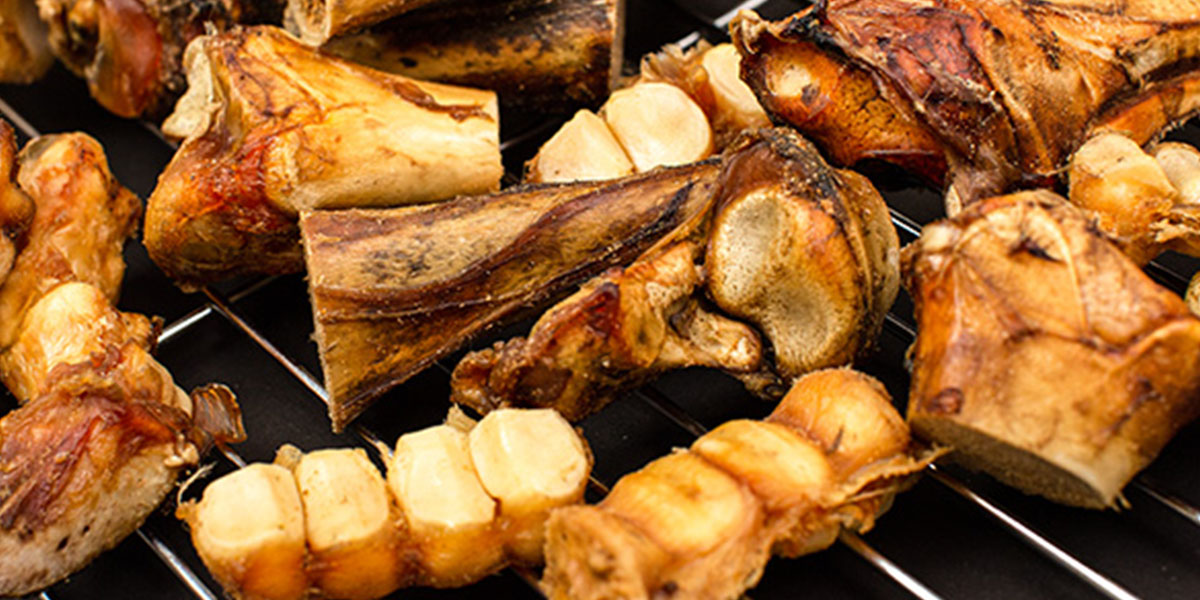
There are several ways to prepare treats.
- Air Drying – The bones are slowly dried at a temperature of 43-50 degrees Celsius, which allows them to retain nutrients. Normal body temperature in cattle is 37.5-39.5 degrees Celsius . We only slightly exceed the usual body temperature of the animal in order to cook the product, thanks to which the bones do not change their usual properties.
- Sublimation – the bones are subjected to instant freezing at very low temperatures, then in a vacuum, by evaporation of ice, the drying process takes place. We all know that heat treatment is the preparation of products using both high and low temperatures. Therefore, the sublimation process also involves heat treatment. However, virtually every raw dieter knows that a bone is only dangerous when it is frozen. The dog might break its teeth on it. After thawing, the bone acquires its usual properties.
- Dehydration – bones and meat are processed at a temperature of approximately 65 -75 degrees Celsius. The evaporation process is rapid and the bones change their structure. The bones dried in this way are not recommended for dogs, but meat, trimmings and offal can be consumed without fear.
So, it’s time to pronounce the postulate, which, alas, applies to all bones:
All bones – raw, air-dried, freeze-dried or dehydrated – are dangerous to dogs. Therefore, be sure to watch your pet when he chews on a bone.
The risks of eating dried bones are exactly the same as eating raw ones. And you and I need to know which bones are especially dangerous for our pets.
Types of bones that are dangerous for dogs
- Frozen bones. We have already mentioned them. Always thaw bones before giving them to your dog, as frozen bone can break teeth more easily.
- Do not give bones that can be swallowed. Also, do not give a bone to a dog that is very hungry. Such a dog will diligently gnaw the bone offered to it and can damage its teeth.
- Do not give rib bones (square).
- It is also not recommended to give pork bones, especially the knuckle. This is due to the risk of getting sick with salmonella and because of the high content of fat in them. What’s more, pork bones break more easily than other animal bones (regardless of whether they’re cooked or raw).
- Do not give boiled bird bones. They can easily prick, leaving sharp edges on the chips.
- Don’t give bones too often. Dogs are naturally capable of consuming and digesting bones, but eating them daily can cause intestinal constipation in your pet.
Why shouldn’t dogs be given boiled bones?
Bones are a unique source of calcium and minerals. But these same substances also make the bones hard. In the process of boiling bones, boiling water absorbs all the organic substances that gave the bones flexibility and elasticity, forming a broth out of them. Bones become brittle, brittle and dangerous to dogs. The flat bones that make up the spine and neck of the animal behave a little differently. By nature, they are softer and more porous, and can be boiled to a soft state. It is worth noting that dogs need calcium for more than just bone growth. Calcium is involved in the processes of blood clotting and muscle contraction, and also has a significant impact on vision and heart function.